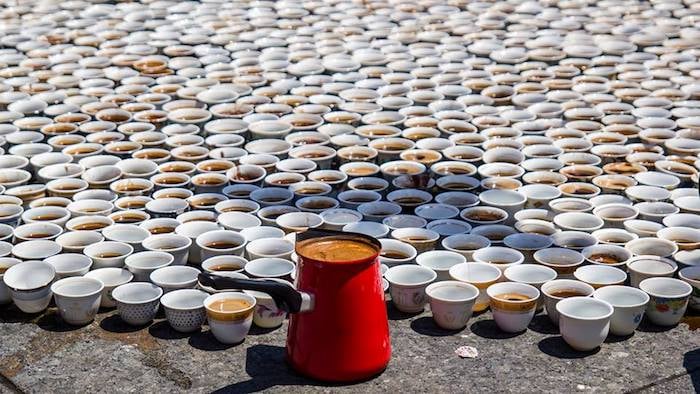Coffee in Chicago: mourning the victims of the Srebrenica massacre

This year on 11 July, the anniversary of the Srebrenica massacre, thousands of cups of coffee were laid out in a Chicago square, as a poignant memorial to the victims of the Srebrenica massacre in 1995. Led by Bosnian-born artist Aida Šehović, with a team of volunteers, the temporary ceramic display is now in its 12th year, having previously been installed in New York, Geneva, Toronto, Istanbul, Stockholm and The Hague.
Šehović‘s installation entitled ŠTO TE NEMA (WHY AREN’T YOU HERE) encourages people to remember and reflect on the genocide of over 8,000 Bosniak men and boys — the victims who will never get to drink the coffee that’s laid out for them. But it’s also about raising awareness about the Serbrenica massacre more widely, inviting people to engage with it in an open and inclusive way.
The deliberate neutrality of the display, allows Šehović to garner more interest from passersby: “We purposefully do not have any signs, flags or banners about the monument on site, so that people who pass by initially have no idea what we are doing and why”, Šehović told Balkan Insight. She added, “Eliminating any kind of symbols that might seperate us allows people to simply approach and ask questions.”
The unifying nature of Šehović‘s memorial is not only visible in the number of people who engage with it on the street, but also in the range of organisations that helped bring it to life. This year’s effort was organised and supported by the Bosnian and Herzegovina Club of Chicago and the Bosnian-North American Women’s Association, as well as the Bosnian Islamic Cultural Centre, to name a few.
Drinking coffee in small cups marks a ritualised communal activity in Bosnian culture, though its reach as a symbol of togetherness stretches globally. In this way, Šehović‘s ŠTO TE NEMA is deeply affecting in its ability to tell this tragic story through a language that is universally understood.
Source: Balkan Insight